Neapolitan pastiera with lard shortcrust pastry, as per the original recipe, the most loved and consumed Neapolitan Easter dessert after the dove cake. Making the pastiera to perfection is not difficult, indeed, you just need to follow the right recipe, which is why I asked my sister-in-law Cleme for the recipe, being from Campania she knows the various traditional recipes better than I do, and yes, there are several versions, with wheat, with rice, but also with pasta. I love the wheat pastiera, and here I am preparing it again this year as tradition dictates for Easter. Usually, I have always made it with butter shortcrust, using the eggs for the cream whipped separately, this time I followed my sister-in-law’s advice, who says “put everything together it doesn’t matter, the pastiera is always good however you make it” so I used lard shortcrust which apparently is the original version of the shortcrust pastry for the pastiera, although many chefs or pastry chefs today prepare it with half butter and half lard. I added the eggs whole to the ricotta cream and I have to admit my sister-in-law was right, the final result is identical, indeed perhaps it inflates less during cooking and there is less risk of breaking the strips that decorate the pastiera, which should retain the filling in a certain way. But do you know why the pastiera has 7 strips? There are 3 legends that explain the custom of the 7 strips. The first legend dates back to the cult of the siren Parthenope, on whose tomb the first core of Naples is said to have arisen. It is said that the siren received seven gifts, each representing one of the 7 strips on the pastiera, and the gifts are none other than the ingredients used to prepare it: flour, wheat cooked in milk, ricotta, eggs, orange blossoms, sugar, candied fruits, each with a very intense meaning. The second legend refers to gifts from the wives of the fishermen of Mergellina to the sea, so that it would calm down and bring their husbands back ashore who had gone fishing, and in the morning they found a new cake prepared with those gifts, the pastiera.
The third legend, which is probably the most told today, refers to the planimetry of the ancient city of Neapolis, the current historic center of Naples. The strips would therefore represent the three Decumani and the four Cardini of the ancient Greek city. I can tell you that in reality, there is no precise rule, because there is no ancient recipe that reports the number of strips to use, so you can also use more depending on how big the pastiera is.
Here are my recipes for the Easter menu – Easter appetizers.
Other Easter recipes
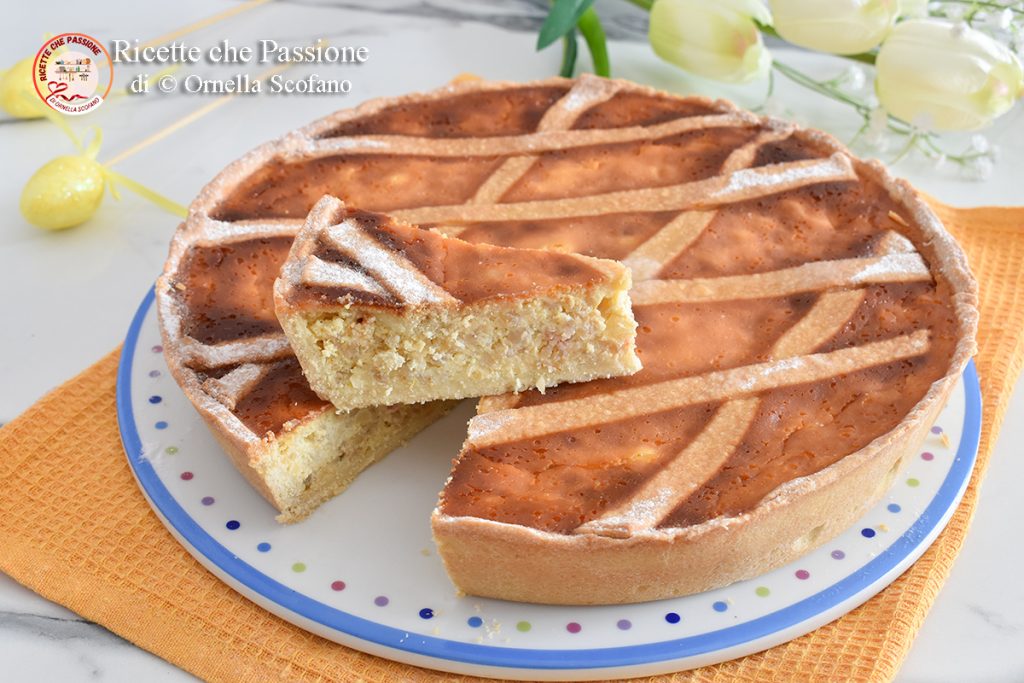
- Difficulty: Easy
- Cost: Medium
- Rest time: 1 Hour
- Preparation time: 40 Minutes
- Portions: 12
- Cooking methods: Stove, Oven
- Cuisine: Italian
- Seasonality: Easter
Ingredients for Neapolitan pastiera with lard shortcrust pastry
- 2 3/8 cups all-purpose flour
- 1/2 cup sugar
- 1/3 cup lard
- 2 medium eggs
- 1 organic lemon zest
- 1 tsp honey (for more golden shortcrust)
- 12 1/3 oz cooked wheat
- 2/3 cup milk
- 2 tbsps butter
- 1 organic lemon zest
- 1 organic orange zest
- 12 1/3 oz sheep ricotta
- 1 cup sugar
- 3 eggs
- 1 3/4 oz candied citron
- 1 oz mixed candied fruits
- to taste orange blossom essence
- to taste lemon zest
Tools for preparing Neapolitan pastiera
- 1 Small saucepan
- 2 Bowls
- 1 Small bowl
- 1 Whisk
- 1 Spoon
- 1 Baking pan for pastiera 9.5-10 inches
- 1 Rolling pin
- 1 Grater
Steps to prepare Neapolitan pastiera Easter dessert with lard shortcrust pastry
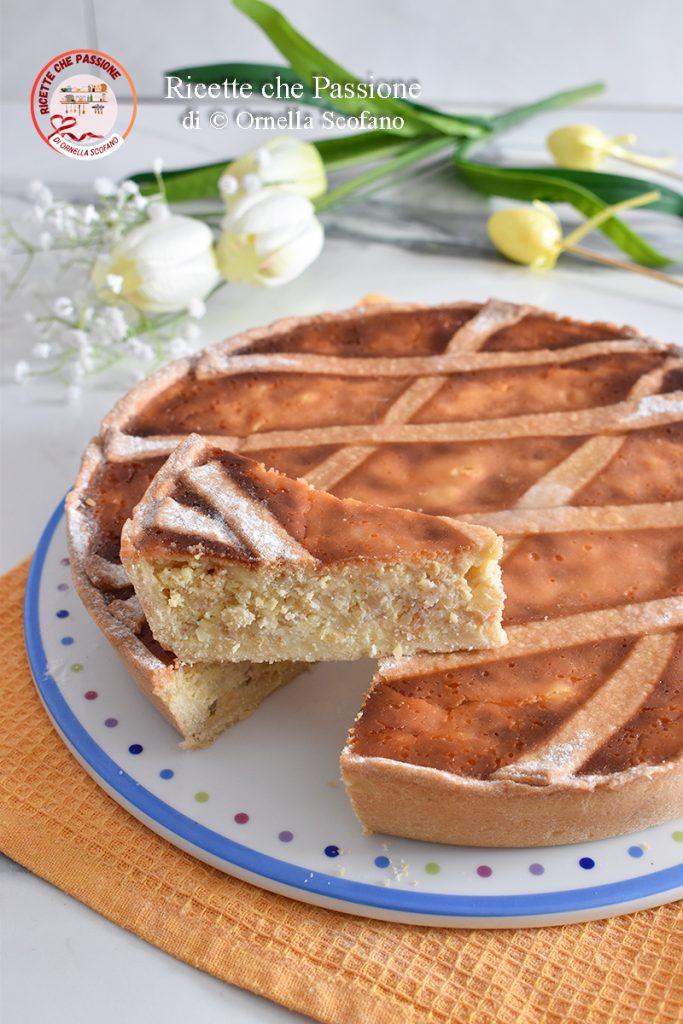
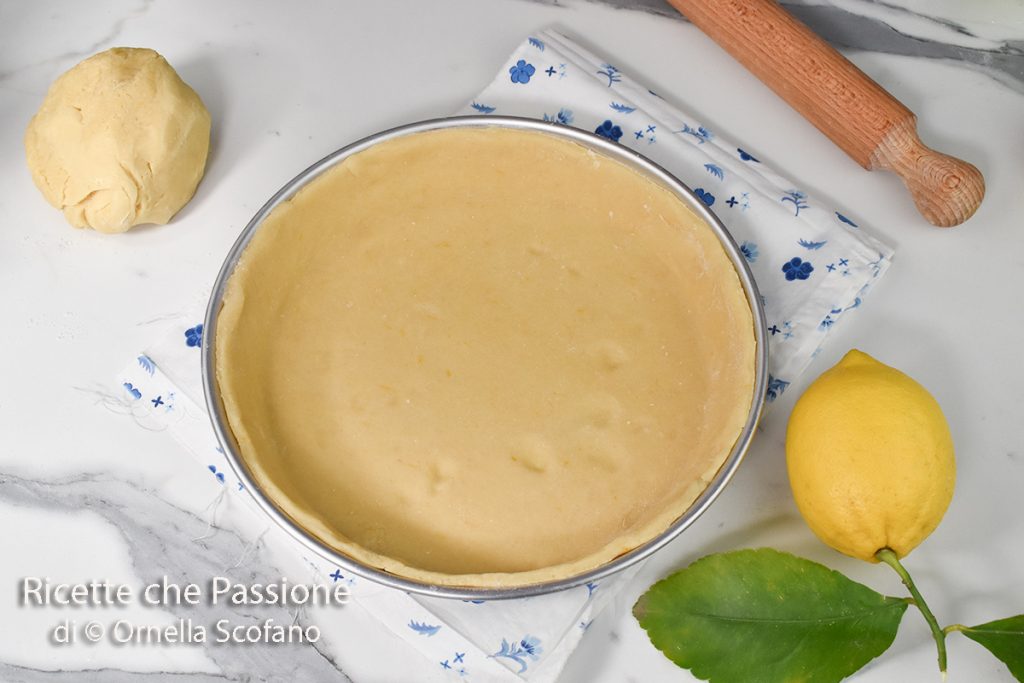
In a bowl we put lard, sugar, and grated organic lemon zest, work to obtain a homogeneous mixture, then add the flour and work again to obtain a sandy mixture, now just add the eggs and work vigorously to obtain a soft and homogeneous dough. Work better on a surface, quickly, then let it rest in the fridge for at least an hour.
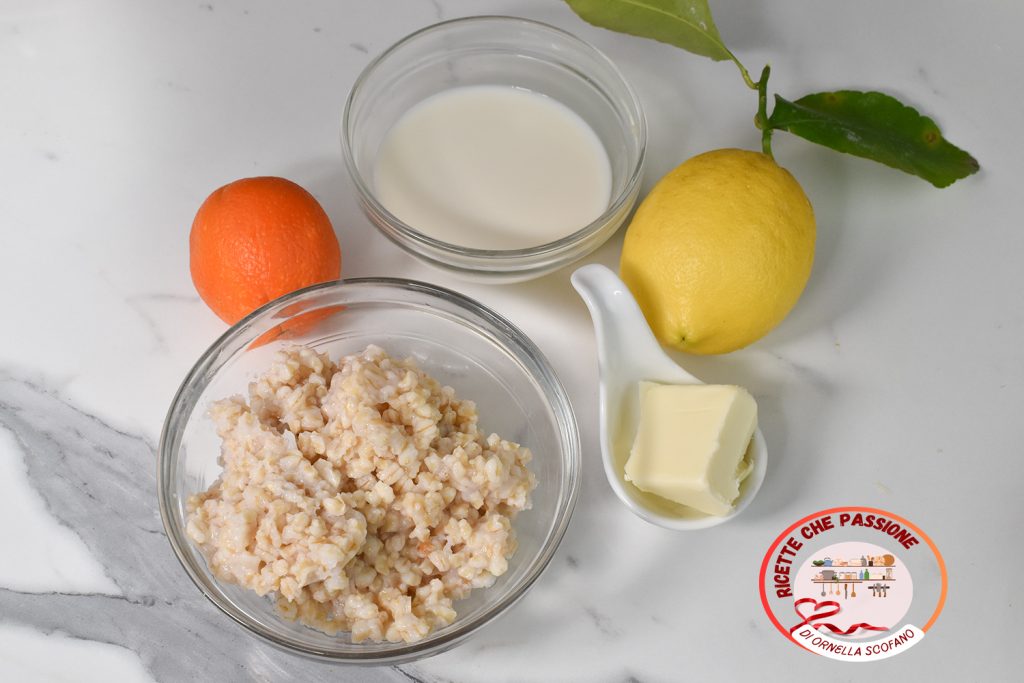
In a saucepan put the wheat with the butter, milk, orange and lemon zest, and bring to a boil. Let it cook for a few minutes to obtain a sort of cream, turn off the heat, place in a bowl, and let cool.

In a large bowl, work the ricotta with sugar to obtain a cream, then add the eggs one at a time, and mix well with a whisk. Then add the wheat cream, candied fruits, orange blossom essence, and grated lemon zest. Mix everything well.
If you like, you can add only the yolks to the cream and whip the egg whites separately, incorporating them at the end with a spatula in gentle movements from bottom to top. In the end, the result does not change even if we have a less liquid cream before cooking.
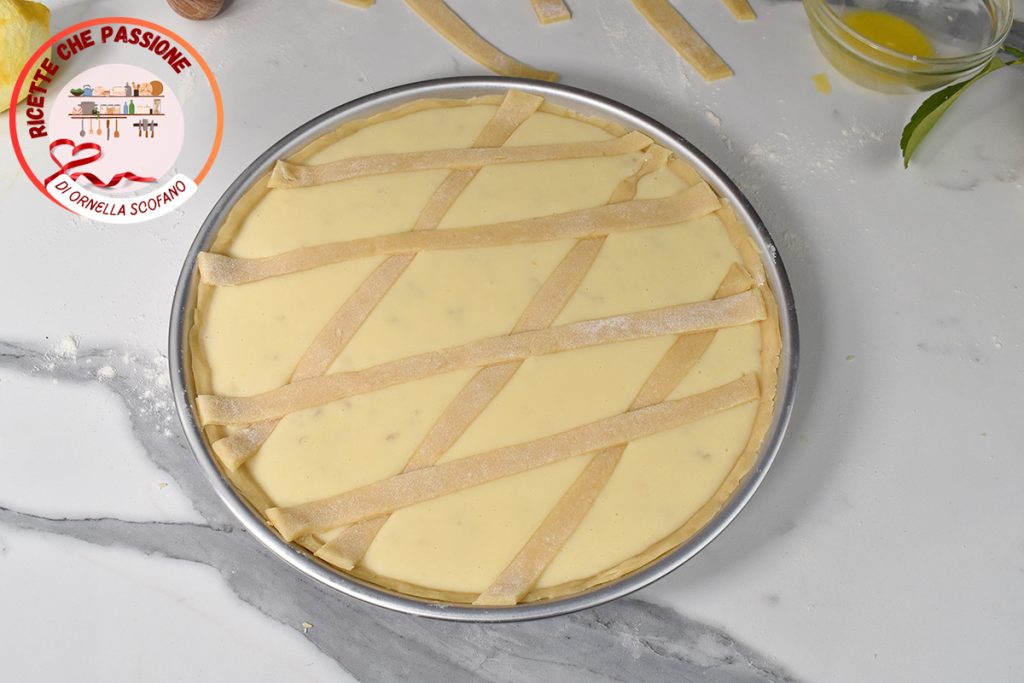
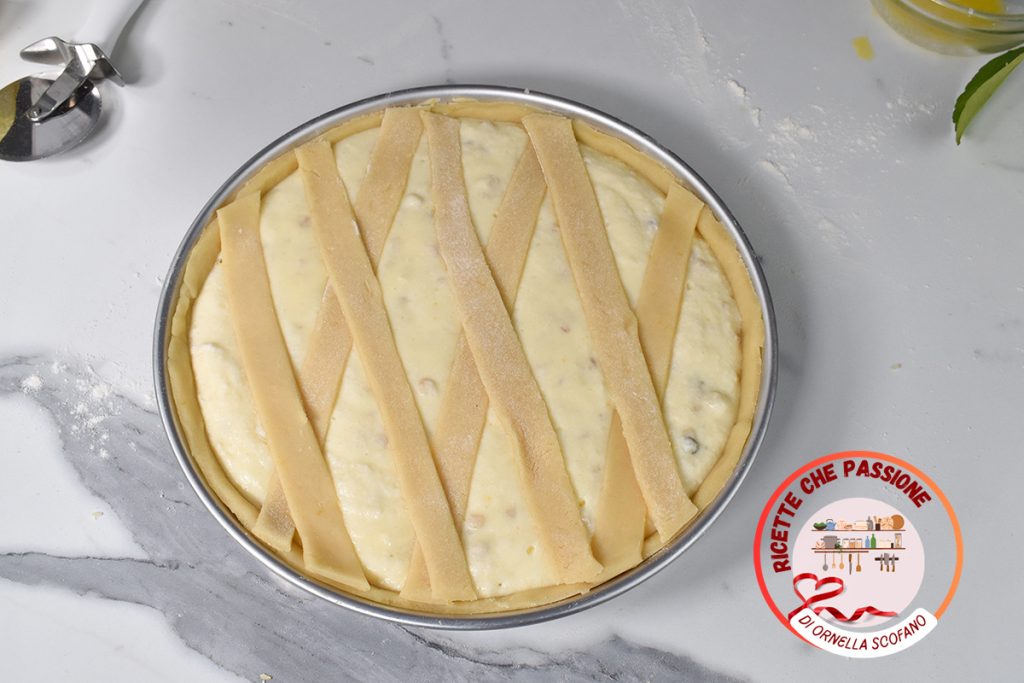
Divide the shortcrust pastry, use about 2/3 for the base, and the rest to make the strips. Work the pastry quickly to make it more elastic so it doesn’t break while rolling. Use a well-floured surface and rolling pin, also flour the pastry well and roll it out thin, about 4 mm, enough to line a pan 9.5-10 inches diameter.
No need to butter and flour the pan, but once the pastry is well rolled out, sprinkle it with flour on one side, distributing it well over the entire surface, and with this, line the pan, including the edges, pressing it firmly and trimming the excess. Poke the base with the tines of a fork; in the video, I forgot to do it, but I recommend always doing it for any tart, as it cooks better at the base.
Pour all the wheat and ricotta cream into the lined pastry pan.
Now all that’s left is to take the remaining piece of shortcrust pastry, work it better so the strips don’t break during cooking, and cut out 7 strips, thin, even wider than the ones I cut and decorate our Neapolitan pastiera as tradition dictates with diamonds, placing the strips first on one side and then on the other. Trim excess parts.
Bake the pastiera in a oven preheated to 356°F for about 70 minutes, or until well golden. The honey in the pastry helps color it better, even at the base, so I recommend adding it, though I didn’t this time. Bake the pastiera in the lower part of the oven; I baked it in the middle, and it remained slightly lighter at the base, but with these small tricks, it will turn out even better, or rather, perfect.
Once cooked, let it cool a bit before removing it from the pan. Transfer it to a serving platter and sprinkle with powdered sugar before serving or the sugar will be absorbed by the moist cream.
If you like, you can also add vanilla and a bit of cinnamon among the aromas.
The pastiera keeps for a few days, depending on the amount of sugar used for the cream it can be preserved more or less long, mine is a moderate dose for the amount of wheat and ricotta, but it keeps well for 2 or 3 days in a cool place, well sealed.

